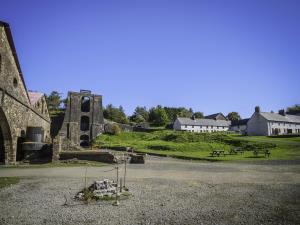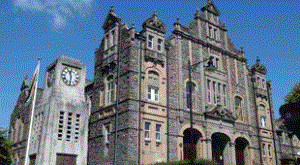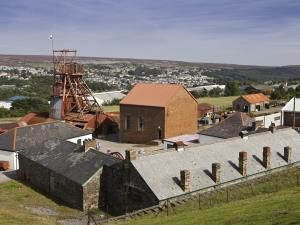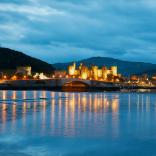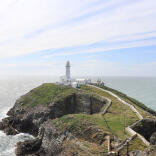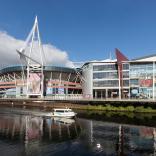The area around Blaenavon was recognised by UNESCO in 2000 as a valuable example of an industrial landscape, thanks to its well-preserved collection of ironworks, mines and other relics. As a local who lives just up the road from Blaenavon, here are a few of my historic highlights.
Blaenavon Ironworks
The centrepiece of Blaenavon’s industrial landscape, the former ironworks were protected during the 1970s – paving the way for the area’s recognition as a World Heritage Site. You’ll see the 18th century blast furnaces where ore was processed into iron, with audio posts bringing the site back to life, plus numerous industrial buildings and remains. There’s also the recreated company truck stop where workers would buy provisions and collection of refurbished ironworker’s cottages (which you might just recognise from the BBC TV series Coal House).

Town and Workmen’s Hall
Though it’s been through some tough times as industry in the region declined, Blaenavon has gone through something of a resurgence. The town centre received conservation status in the 1980s, meaning that many of its characterful and historic buildings have been preserved. Much of the centre is now pedestrianised, making it easy to explore its nooks and crannies, plus its good selection of independent shops and places to eat and drink. To find out more, I recommend downloading the Blaenavon Digital Passport for an immersive audio tour of some of the town’s historic places. One of the most significant of these is the Workmen’s Hall. A centre of the community since 1895, this imposing stone building is still a venue for films, music, sports and local groups.
Big Pit National Coal Museum
This working mine turned tourist attraction once employed some 1,400 miners in its inky depths. These days, the trip down in the 90m lift shaft to the tunnels beneath the earth is purely recreational, but it’s still the best way to get a real feel for what life was like for those who made a living digging for ‘black gold’. Above ground, you can also see a selection of pit buildings, including the showers where the men would clean up after a day of work and the massive pithead machinery that powers the lift.
Fun fact: as a child my family served as models for Big Pit’s brochures and publicity materials, which gives me an even greater fondness for the place. Should that bit of trivia not be enough to tempt you into a visit, I’ll add that, as one of the National Museums of Wales, while charges may apply to some exhibitions, special events and tours, entry to Big Pit National Coal Museum is free.


Monmouthshire & Brecon Canal
Smelting the steel and mining the coal were only parts of the industrial process. You also had to move them around, as well as provide fuel and raw materials for the roaring blast furnaces. This is where the Monmouthshire & Brecon Canal came in. Once stretching all the way to Newport, this waterway was a busy artery transporting coal, iron, limestone and agricultural products. These days, you’ll spot pleasure boats and the occasional kingfisher in place of barges laden with cargo, which makes it a great spot for walks and bike rides.


Pontypool and Blaenavon Heritage Railway
Everyone loves a steam train. There’s something about gently puffing along that brings out the inner child in everyone. Blaenavon’s Heritage Railway is an attraction in its own right and a great way to see some more of the local sights. As the line travels between Coed Avon and Whistle Halt, there are plenty of places where you can jump off to do a bit of exploring. A personal favourite is Garn Lakes, a nature reserve born from a barren post-industrial landscape. Looking at this area of wetland alive with birds and animals today, you’d never guess it was an area of tips and old colliery workings little more than 20 years ago.
Search for more things to to and places to stay near Blaenavon.



